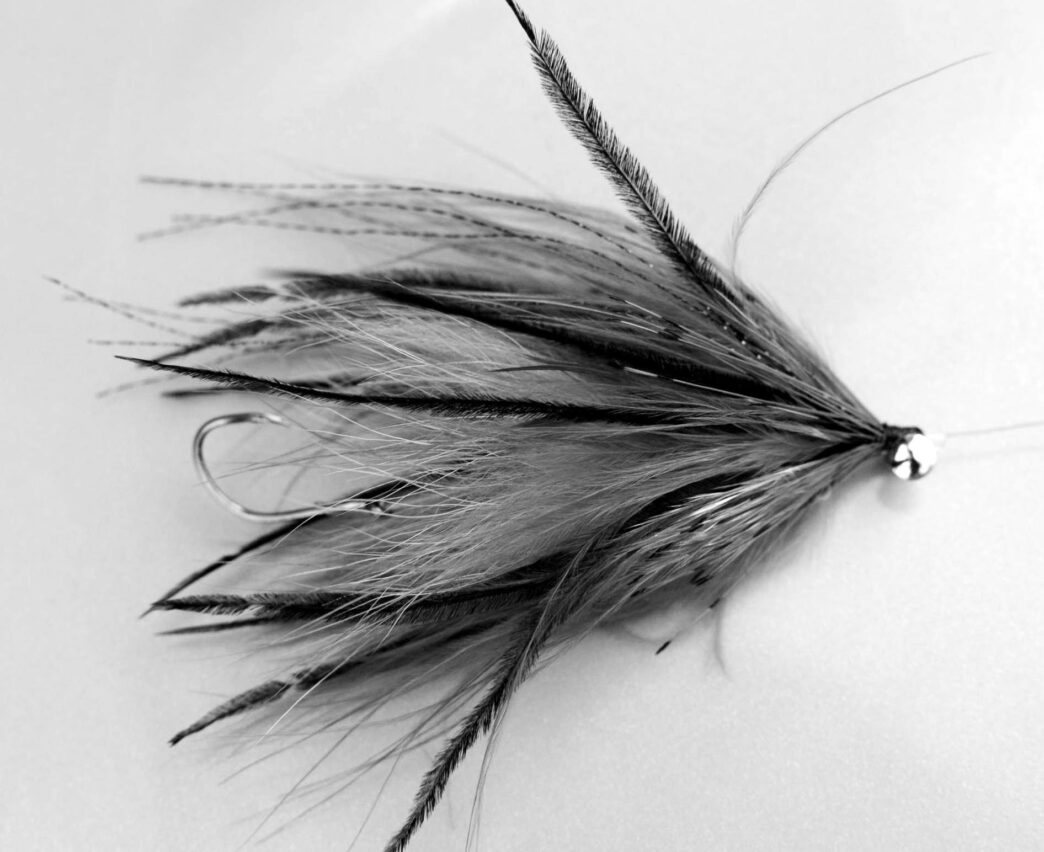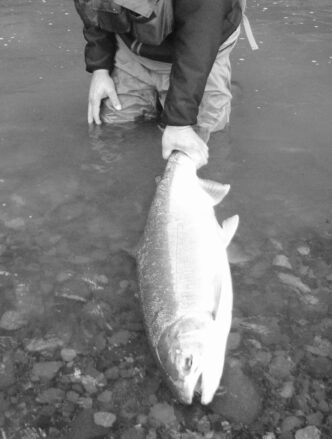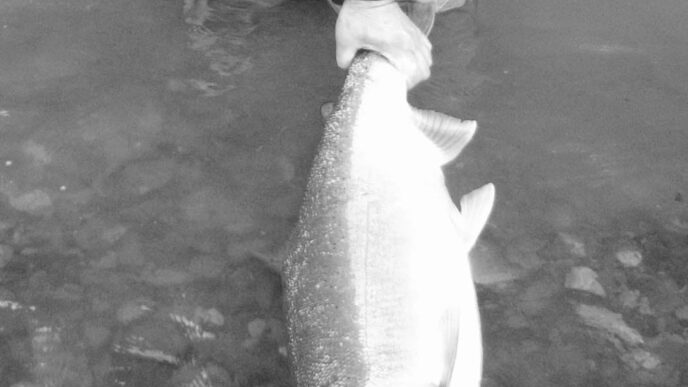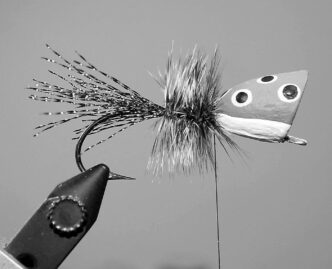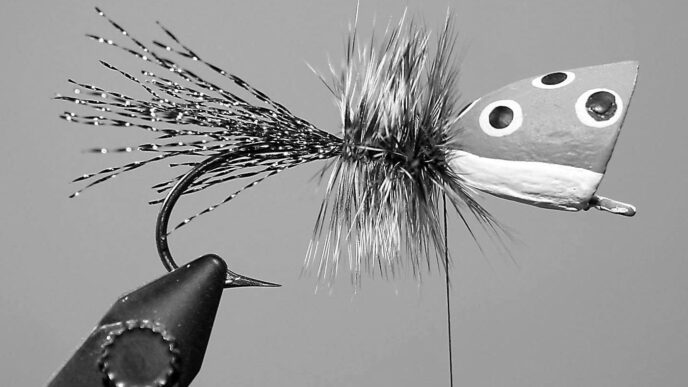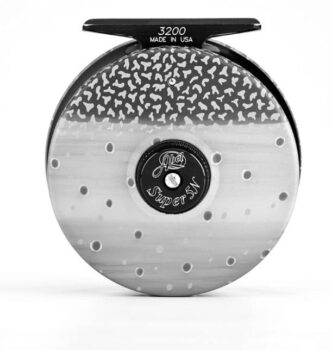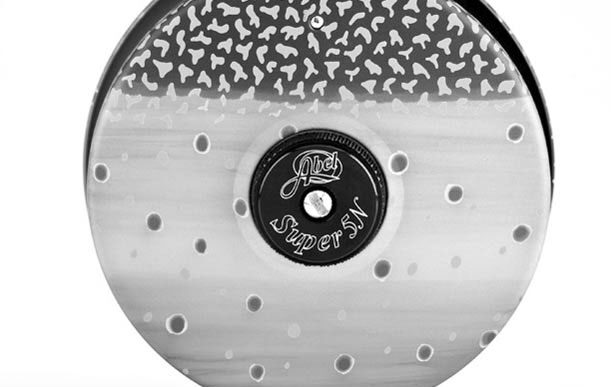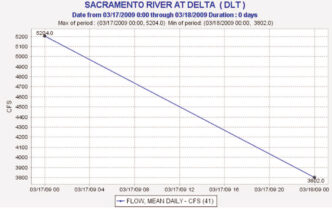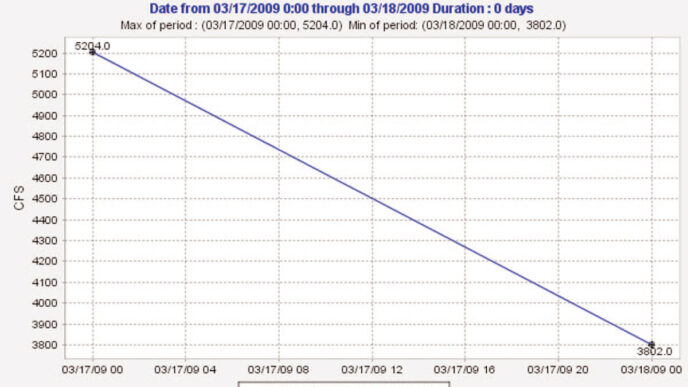I first met Jason Hartwick several years ago. The owner of the fly shop where I’ve been employed part-time had just hired him. During the ensuing months, we talked of Spey rods and lines, winter steelheading, and fly patterns designed to entice the wily gray ghosts of winter. We shared tales of frozen hands and cold, wet days endlessly casting and swinging flies, of snow blowing horizontally on the Trinity River in January, of feeling lucky to have been the one to get that single grab, and of the sound of a screaming reel and disappearing backing when finally that unforgettable connection happened.
In time, Jason showed me some of his newest steelhead patterns. Until then, he’d seemed a bit reticent about displaying his creations. I still remember my widening in surprise when he opened his steelie fly box. Not only did it include myriad beautifully crafted traditional steelhead patterns, there were also interesting, thoughtful, original designs that looked like they would swim with graceful movement in the current. We oldsters have a skeptical side when examining “new” flies, but I can safely say that I was blown away, as were a few other shop dogs looking over my shoulder.
Having made arrangements to swing flies on the lower Yuba the next day, I bummed one of Jason’s greenish stingerstyle sculpin bugs. (Actually, I think he saw my lustful look and caved in.) I didn’t set any records on the Yuba, but that is no reflection on Jason’s fly. Rather, it was me trying to wean myself off of single-handed rods and flubbing one Spey cast after another. I did finally hook a suicidal fish, but dropped it off as, in my excitement, I took an unscheduled swim.
A few days later, when I joined Jason at Sailor Bar on the lower American for an early morning Spey-rod lesson, he showed me the slinky action of one of his steelhead tube flies. He held it on a short leader, and we watched it move enticingly in the current while it maintained its profile instead of flattening against the hook.
One more thing before Jason tells the story behind his Steelhead Crippler and reveals his tying secrets: Jason is a very accomplished Spey rodder. With his help and that of Jeff Putnam and Dec Hogan, I’ve managed to become a reasonably proficient Spey caster. On a recent Deschutes steelhead-on-the-Spey adventure with Jason and four others, we spent four days drifting through the river’s magnificent canyon, and I landed a beautiful wild 10-pound steelie — and yes, the fish fell for one of Jason’s flies. It just doesn’t get any better, folks. But now let’s hear from Jason. “In California, we fortunately have many fly-fishing options during the winter months: trout fishing on year-round streams, striper fishing in the Delta, and winter steelhead fishing as the big brutes blast into just about any unobstructed stream entering the ocean. I have fished for trout and stripers in the winter, but nothing gets me going like chasing the ghosts of winter. While winter steelheading is not a numbers game, it is quite possible that one of the few fish you do hook (and, one hopes, land) could be the fish of a lifetime — maybe not that elusive 20-pounder, but possibly a midteens fish that clears a hundred or so yards of backing in a split second. This always-present potential is one of the reasons I love winter steelhead.
“Not many years ago, while searching for winter steelhead on a couple of well-known coastal rivers in Northern California, I spent countless hours fishing classic riffles and long runs with nothing to show for it but a great deal of casting practice. I watched drift boats pass by, ignoring the riffles and runs I was fishing on their way to the deeper, slower pools. This paying-my-dues experience taught me that winter steelhead don’t always like the classic riffles and runs favored by their summer and fall run cousins. Once I began fishing the slower pools and longer glides, I hooked more fish. As I adapted to winter steelhead fishing, my steelhead fly tying also evolved. “While the classic Popsicle and Blue Moon marabou-style flies made famous by George Cook for steelhead and chinook salmon fishing throughout the Pacific Northwest hooked fish, I had other ideas. I needed a fly with the movement of marabou and ostrich herl, but one that wouldn’t collapse and lose its profile in the current. I also wanted a fly that wouldn’t need the long shank that allows steelhead to throw the hook. After some experimentation, I decided on bait-style hooks for stinger-style flies. Through trial and error and countless hours at the tying bench, I came up with the Steelhead Crippler tube fly, a winter steelhead fly that is easy to cast, has good movement and a good profile, and lands more hooked steelhead.”
Materials
You will need either a tube-fly vise or the simple and easy-to-use adapter kit available from most fly shops. The kit contains several mandrels, each sized differently. Use the small-diameter mandrel for this fly.
Hook: Bait-style hook, such as the Owner SSW, size 2
Tube: Small-size plastic tube, one and three-quarters of an inch in length
Thread: Black 6/0
Butt: Dubbing ball of fine pink material
Butt collar: Spun arctic fox or craft fur, pink
Body: Fine purple dubbing
Hackle: Purple schlappen, palmered through the body
Collar 1: Purple marabou
Collar 2: Black ostrich herl
Flash: Four pieces of black Krystal Flash
Collar 3: Purple-dyed golden pheasant tippets
Eyes: 3/16-inch Dazzle Eyes or lead eyes
Tying Instructions
Step 1. Slide the plastic tube onto the small-diameter tube-fly mandrel and secure it in the vise or adapter. Make sure the tube is snug against both the end of the mandrel and the vise or adapter. This keeps the tube from spinning when tying on materials. Start the thread an eighth of an inch from the rear of the tube and leave the bobbin at that point.
Step 2. Form a dubbing loop. Insert the pink dubbing into the loop and spin it to create a “chenille.” Wrap the spun loop within a small area to create a large round or egg-shaped ball.
Step 3. Cut a large clump of pink arctic fox or craft fur. Either works well, but craft fur seems more readily available and is less expensive. Spread the material out and lay it in front of the pink dubbing ball. Since this material does not spin like deer hair, take a couple of loose wraps around the material to distribute it evenly around the dubbing ball. Follow with two tight securing wraps to form a back collar in front of the pink dubbing ball, which will provide a large profile.
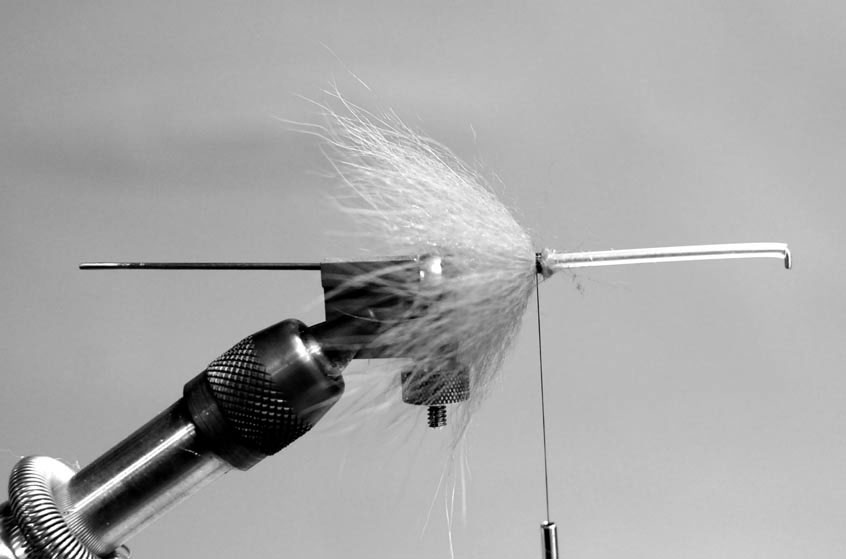
Step 4. Strip the webby butt fibers from a purple schlappen feather and tie it by its tip in front of the rear collar.
Step 5. Dub a sparse body approximately one inch in length. Place several turns of thread at the forward end of the dubbing.
Step 6. Wrap the schlappen feather forward over the dubbed body. Four wraps are sufficient. Secure the feather at the forward end of the body and trim excess.
Step 7. Tie in one plume of marabou by its tip just ahead of the front of the body. Wind this plume forward, taking four or five close turns. Secure the marabou with several thread wraps and trim the excess.
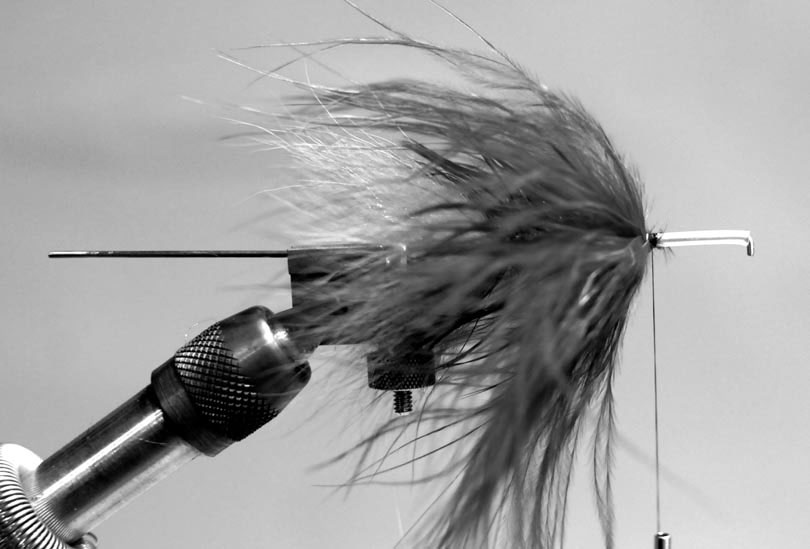
Step 8. Cut 12 to 16 strands of black ostrich herl, all equally long, from the stem and clump them together. With a permanent black marker, create evenly spaced lines on the herl clump approximately one-quarter of an inch apart.
Step 9. Tie in two or three strands of the barred herl at a time by their butt ends, circling the base of the marabou. You want the ostrich to be just a bit longer than the length of the marabou once wrapped. Once finished, you should have an evenly wrapped collar of barred ostrich herl in front of the marabou collar.
Step 10. Double two pieces of black Krystal Flash around the thread; tie the resultant four strands in on one side of the fly, in front of the ostrich herl collar. Repeat this process on the opposite side of the fly. Cut the flash so that it is just a bit longer than the length of the marabou, but shorter than the ostrich herl.
Step 11. After stripping the fuzz from its butt end, tie in a purple golden pheasant tippet feather by its tip, just ahead of the ostrich herl collar; wrap it forward with close turns, using the entire barred feather. Tie it off and cut the stem.
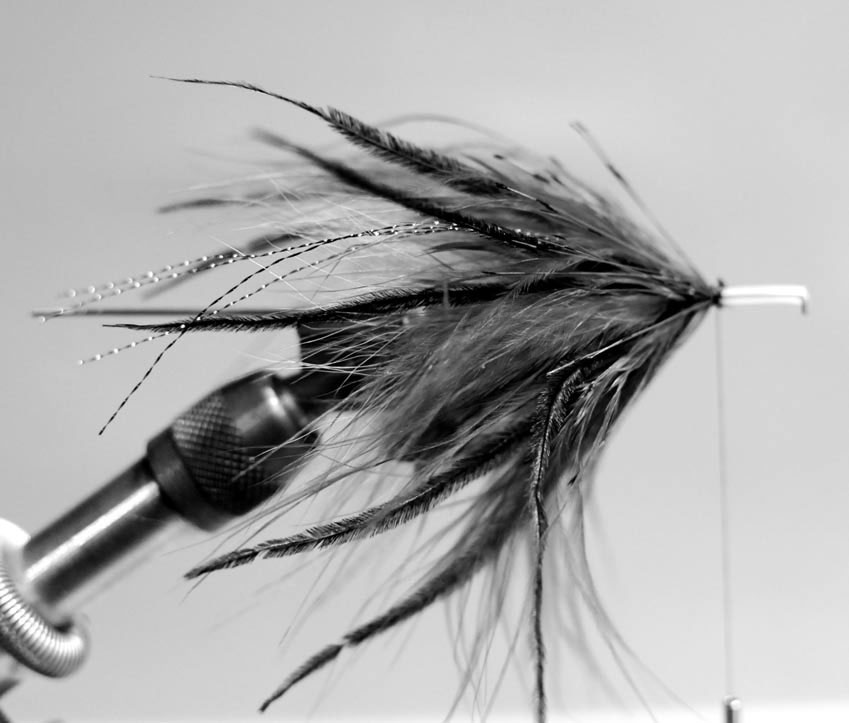
Step 12. At the front of the fly, tie in a pair of eyes for a little weight. Make sure the eyes are on the bottom of the tube. Secure the eyes with figure-eight thread wraps and apply a drop of head cement to the threads.
Step 13. Once the head cement has dried and with the fly still on the mandrel, create a “lip” at the front end of the fly tube by heating it slightly with a lighter.
Rigging the Crippler
Slide the fly down the leader with the eyes toward the fly line. I use a 3-foot or 4-foot long leader of 10-pound or 12-pound straight monofilament attached to my sink tip in a loop-to-loop connection.
Once the fly is on the leader, tie a three-quarter-inch-long Double Surgeon’s Loop at the end of the leader. Pinch down the front end of the loop, slide it through the eye of a size 2 bait-style hook such as an Owner SSW or Gamakatsu Octopus, and then loop it over the hook. Pull tight, and the loop should be secured to the eye of the hook. Slide the tube fly down to the knot created by the Double Surgeon’s Loop and pull the tube onto the knot. This will secure the fly in position and leave the hook protruding from the tube’s back end. Position the tube on the knot so that the eyes of the fly ride down while the hook point rides up. Once this rig is complete, the fly is ready to be fished.
Jason Hartwick is a steelhead guide on Northern California’s coastal rivers. He specializes in swinging floating and subsurface flies with Spey gear. When not guiding, he works at Kiene’s Fly Shop in Sacramento. For more information, visit his web site at www.steelheadonthespey.com or e-mail him at speybum@gmail.com.




